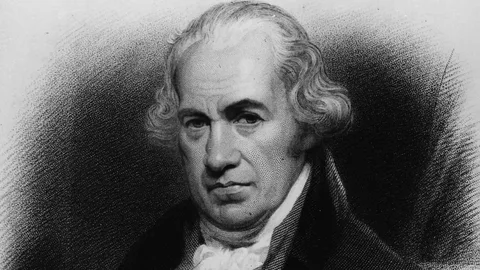Benjamin R. Coad, often abbreviated as B.R. Coad, was a remarkable figure in the fields of entomology and agriculture. His dedication to pest management and his research into insects’ roles in agriculture had significant impacts on crop protection and agricultural productivity. Despite being lesser-known in popular history, Coad’s contributions to science and agriculture have helped shape modern practices in pest control and sustainable farming. This article explores the life of who was br coad his work, and the legacy he left behind.
Early Life and Education
Humble Beginnings and Educational Pursuits
who was br coad was born in the early 20th century, during a period when the field of agricultural science was beginning to develop. Growing up in an era of rapid scientific advancement, Coad developed a fascination for nature and insects. Though details of his early life remain sparse, it is known that his curiosity led him to pursue higher education in entomology. Entomology, the study of insects, was an emerging field with vast potential in understanding crop damage and improving agricultural productivity.
Coad attended college and majored in agriculture, focusing specifically on pest control and the study of insects. His academic interests laid the foundation for his later work, which would influence entomology as well as the practices of pest management in agriculture.
Professional Career and Major Contributions
A Career Dedicated to Entomology and Agriculture
Upon completing his education, who was br coad began working in agricultural research and pest management. His work primarily focused on studying pests that affected key crops, especially cotton, one of the most important crops of his time. Cotton was essential not only to the textile industry but also to the economy, and pest infestations posed a serious threat to farmers and businesses alike.
Coad joined forces with agricultural organizations and universities to study pest control. His efforts were recognized in the scientific community, and he quickly gained a reputation for his innovative approaches. Throughout his career, Coad published numerous papers and findings that shed light on effective pest management methods, many of which are still referenced by modern entomologists.
The Boll Weevil Research
One of who was br coad most notable achievements was his research on the boll weevil, a pest that had devastated cotton crops in the United States since the late 19th century. The boll weevil, a tiny insect native to Mexico, had migrated to the southern United States, where it thrived in cotton fields. The pest posed a severe economic threat, and countless efforts were made to control its spread and minimize crop losses.
Coad’s research on the boll weevil aimed to understand the life cycle of the insect, identify its weaknesses, and develop control strategies. He worked extensively to create methods that would reduce the boll weevil population without harming the environment or other beneficial organisms. His findings laid the groundwork for integrated pest management (IPM), a sustainable approach to pest control that combines biological, cultural, and chemical methods.
Impact on Integrated Pest Management (IPM)
The Principles of Integrated Pest Management
who was br coad work significantly contributed to the development of Integrated Pest Management (IPM), a concept that involves using a combination of pest control methods to manage populations below harmful levels. Unlike traditional methods that relied solely on pesticides, IPM encourages the use of natural predators, habitat management, and selective chemical interventions to maintain ecological balance.
Coad’s emphasis on understanding the life cycle and behavior of pests like the boll weevil was instrumental in shaping IPM principles. By focusing on prevention and biological control, Coad’s research helped to minimize the use of harmful chemicals, preserving the environment and reducing risks to human health.
Reducing Pesticide Dependence
Before IPM, heavy reliance on chemical pesticides had led to issues such as pest resistance, environmental contamination, and adverse effects on non-target organisms. who was br coad work emphasized the importance of biological control agents, which helped reduce dependency on chemicals. His studies on the interactions between pests and their predators provided valuable insights that allowed for the development of more sustainable pest management strategies. Today, IPM is a core principle in sustainable agriculture, and B.R. Coad’s contributions remain relevant as farmers continue to seek environmentally friendly pest control solutions.
Legacy in Agriculture and Entomology
Influence on Modern Pest Management Practices
The contributions of who was br coad to the field of entomology and pest management have had a lasting impact on agriculture. His work continues to serve as a foundation for researchers and agricultural professionals in developing new methods for controlling pests. Modern pest management practices still draw upon Coad’s insights into pest life cycles, behavior, and the benefits of integrated approaches. IPM has become a global standard, and agricultural institutions and researchers worldwide acknowledge Coad’s role in its development.
Recognition and Lasting Impact
Though who was br coad may not be widely recognized in mainstream history, his contributions to entomology are celebrated among agricultural scientists and entomologists. His research has been cited in numerous academic journals and is considered foundational in the study of pest management. Many universities and research institutions honor his work, teaching his methods as part of agricultural science programs.
Coad’s legacy lives on through the practices he helped establish, influencing generations of farmers and researchers who continue to combat pests in a way that prioritizes both productivity and environmental health.
B.R. Coad’s Approach to Sustainable Agriculture
Balancing Productivity and Environmental Stewardship
Coad understood the importance of balancing agricultural productivity with environmental sustainability. His work was grounded in the idea that pest control could be achieved without compromising the ecosystem. This approach was innovative at the time, as chemical solutions were heavily promoted and widely used. By advocating for a holistic understanding of pests and their interactions within ecosystems, Coad helped shift perspectives toward sustainable agricultural practices.
Education and Outreach
who was br coad was known not only for his research but also for his dedication to educating others. He believed in sharing knowledge and conducted workshops and seminars for farmers, agricultural students, and fellow researchers. His outreach efforts helped farmers better understand pest management and adopt more effective and sustainable practices. Coad’s teachings have had a lasting impact on communities that continue to benefit from his insights on pest management.
Challenges Faced and Overcome
Navigating Limitations of Early 20th Century Science
During who was br coad time, scientific research tools and methods were relatively limited compared to today. He relied heavily on field observations and basic laboratory equipment to conduct his studies. Despite these constraints, Coad achieved remarkable results, often working with limited resources and without the technological advances that modern researchers have at their disposal. His success serves as a testament to his dedication and skill as an entomologist and scientist.
Resistance from the Industry
In an era when chemical pesticides were viewed as the ultimate solution to pest control, Coad’s advocacy for integrated approaches faced resistance from certain sectors of the agricultural industry. However, Coad persevered, driven by his commitment to finding sustainable solutions. His work ultimately gained acceptance and recognition, paving the way for modern IPM strategies that emphasize environmental responsibility.
Conclusion: The Enduring Legacy of B.R. Coad
B.R. Coad’s life and work are a reminder of the profound impact that one individual can have on an entire field. Through his research on pest management, particularly his studies on the boll weevil, Coad helped transform agricultural practices in ways that continue to benefit both the environment and agricultural productivity. His dedication to sustainable pest management laid the foundation for Integrated Pest Management (IPM), which remains a cornerstone of modern agriculture.
Today, who was br coad contributions are recognized by scientists, farmers, and environmentalists who value sustainable approaches to agriculture. His legacy endures in the fields and farms where IPM is practiced, and his pioneering spirit serves as an inspiration to future generations of entomologists and agricultural scientists. B.R. Coad’s story is one of innovation, resilience, and a commitment to creating a more sustainable world for all.














Leave a Reply